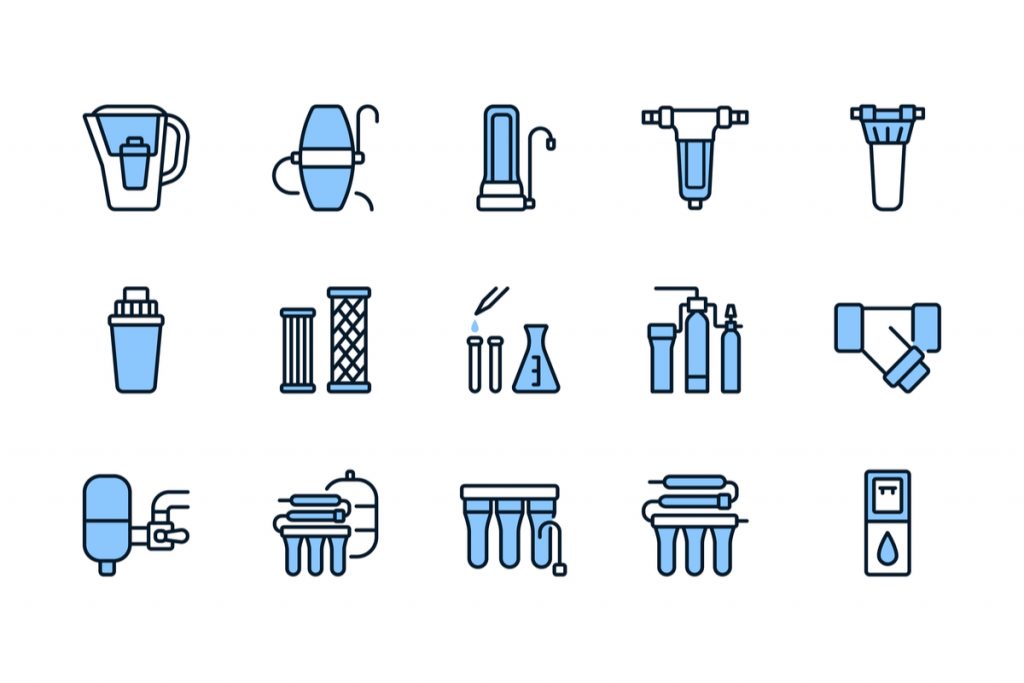Water purification is a process by which undesired chemical compounds, harmful materials, and biological contaminants are removed from water. The main purpose of water purification is to produce clean drinking water. Water purification also meets the needs of medical, pharmacological, chemical, and industrial applications for clean and potable water. The purification procedure reduces the concentration of contaminants such as suspended particles, parasites, bacteria, algae, viruses, and fungi.
There are many methods for water purification such as:
- Reverse Osmosis (RO) is a very high tech water purification process that uses a partially permeable membrane to separate ions, unwanted molecules and larger particles from drinking water. In reverse osmosis, an applied pressure is used to overcome osmotic pressure, a colligative property that is driven by chemical potential differences of the solvent, a thermodynamic parameter. Reverse osmosis can remove many types of dissolved and suspended chemical species as well as biological ones, mainly bacteria, from water and is used in both industrial processes and in the production of potable water. Standard filtration capability of RO is in the range of 0.0001Microns – so it is also known as Nano Filtration.
- Ultraviolet Water Purification (UV) is the most effective method for disinfecting bacteria from the water. Ultraviolet (UV) rays penetrate harmful pathogens in water and destroy illness-causing micro-organisms by attacking their genetic core (DNA). This is extremely efficient in eliminating their ability to reproduce. Disinfecting water with Ultraviolet light is exceptionably simple, effective and environmentally safe. UV systems destroy 99.99% of harmful micro-organisms without adding chemicals or changing water’s taste or odour. UV water purification is usually used with other forms of filtrations such as reverse osmosis systems or carbon block filters.
- Distillation relies on evaporation to purify water. Contaminated water is heated to form steam. Inorganic compounds and large non-volatile organic molecules do not evaporate with the water and are left behind. The steam then cools and condenses to form purified water. Distillation effectively removes inorganic compounds such as metals (lead), nitrate, and other nuisance causing particles such as iron and hardness from a contaminated water supply. The boiling process also kills micro-organisms such as bacteria and some viruses. Distillation removes oxygen and some trace metals from water. For this reason, some people claim distilled water tastes flat. The effectiveness of distillation process lies in removing organic compounds depending on chemical characteristics of the organic compounds such as solubility and boiling point. Organic compounds with boiling points lower than the boiling point of water (ex. benzene and toluene) vaporize along with the water. These harmful compounds will re-contaminate the purified product if not removed prior to condensation.
- Water Chlorination is the process of adding chlorine or chlorine compounds such as sodium hypochlorite to water. This method is used to kill bacteria, viruses and other microbes in water. In particular, chlorination is used to prevent the spread of waterborne diseases such as cholera, dysentery, and typhoid. Chlorine inactivates a micro-organism by damaging its cell membranes. Once the cell membrane is weakened, the chlorine can enter the cell and disrupt cell respiration and DNA activity (two processes that are necessary for cell survival).

